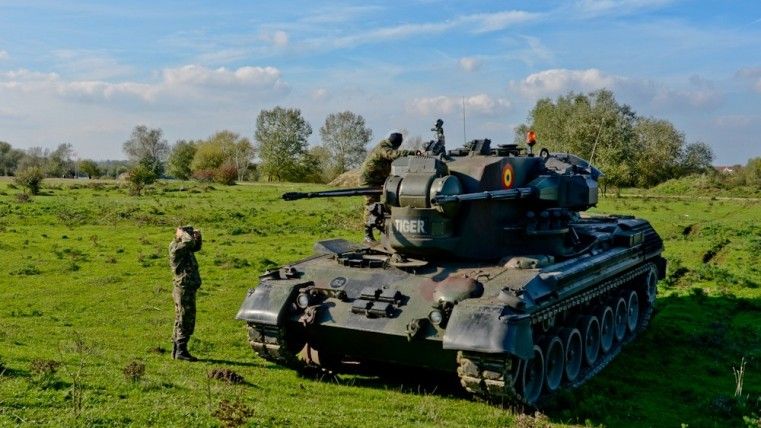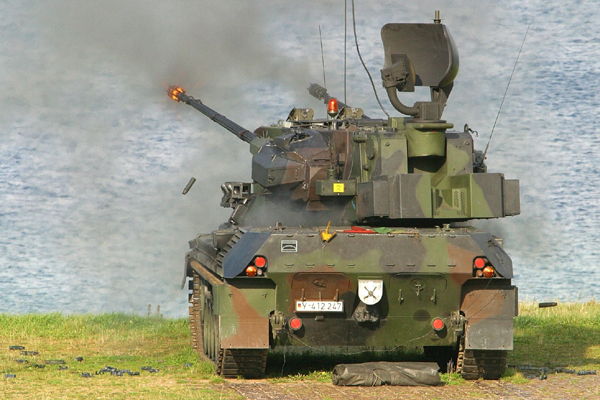Armed Forces
Gepard Anti-Aircraft Systems Deployed to Poland

Romania decided to deploy its mobile Gepard anti-aircraft artillery systems to Poland. This means that 35 mm AAA systems, using NATO-compliant ammunition, would operate in Poland for the first time.
The Romanian soldiers would be supporting the NATO Battalion Battle Group in the Orzysz and Bemowo Piskie area. They would replace air defence elements that have been stationed in Poland since 2017, using the 35 mm GDF-003 Oerlikon systems. The Romanian MoD announced that Gepards have already begun activities in Poland.
The deployment of the Gepard systems could be perceived as a major reinforcement for the battalion battle group. The platform in question can accompany the protected units during the manoeuvres, also being able to act against low flying targets, such as UAVs. Romania has around 40 systems as such at its disposal, acquired from the Bundeswehr’s surplus.
Militarii Detașamentului de Apărare Antiaeriană ,,Geparzii Transilvani” au început această săptămână în forţă, prin executarea primului exercițiu de antrenament în teren, în poligonul Wierzbiny din Polonia. pic.twitter.com/F6a7DCQkSu
— MApN (@MApNRomania) October 27, 2020
The German military, withdrawing the Gepard systems between 2010-2012, without acquiring a replacement, actually got rid of the capability to defend manoeuvring land elements. As the service life of those systems came to an end (with a lot of them being decommissioned), the last mobile air defence units were also disbanded (some of the Stinger/Ozelot systems that remained were transferred to Luftwaffe).
Current plans assume that this capability shall be restored, based on AAA and SAM systems that would be carried by the Boxer APC. Considering the necessity to refine this system and to create military units that would use it, the process would be a long one. Throughout its duration, the Bundeswehr’s capabilities would remain limited.

Gepard is a self-propelled anti-aircraft system developed in the 1960s and 1970s. It has been based on the Leopard 1 MBT. However, since then it has undergone numerous upgrades. The system is armed with two 35 mm cannons. It features its own target detection/tracking radar. The manufacturer - KMW - informed that more than 570 platforms as such have been delivered, with an ability to act against airborne threats at a distance of up to 6 kilometres, in any weather conditions, at night and during the day.
Back in the days of the Cold War, these assets have been a key component of air defence units of the Dutch, Belgian and German armies. Today, some of those platforms serve in Brazil and Romania. Some information has also emerged that Qatar could be on the path to acquire these systems, coming from the KMW inventory (to protect the Football World Cup events in 2022).
Notably, similar development solutions (as for the Gepard system) were adopted for the Polish Loara-A AAA system developed by PIT-RADWAR. Loara-A had advanced sensors at its disposal, fire control system and two 35 mm guns. A single example of the system was introduced into service in the 10th Cavalry Brigade. The project, meanwhile, was finalized in 2009. The experience gathered as a result of this programme has been used to design Polish radars, C2 solutions and several variants of 35 mm AAA systems, including ones using new Polish programmable rounds.
Since some time now the Polish Ministry of Defence has been involved in the SONA programme aimed at introduction of a mobile air defence system capable of defending the land forces. It is possible that, within the scope of implementing the program, Loara would be used as a springboard. Nonetheless, its capabilities shall be broader than the original, also including the C-RAM and missile defence capabilities.
